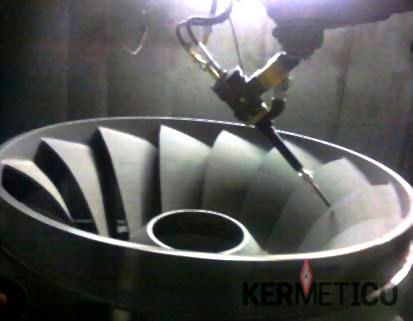Erosion and Cavitation Resistant Coatings
Silt and Sand Erosion and Cavitation of Hydro Turbines and Impellers

Cavitation is a phenomenon which manifests itself on the metallic surfaces of rotating parts. The mechanism of material damage during cavitation is mainly attributed to the implosion of high-velocity bubbles on the component surface leading to a local increase in stresses in excess of the yield strength of the material.
Silt or sand erosion is caused by the dynamic action of the silt or other particles flowing along with water, impacting against a solid surface of turbine vanes and blades. The erosion and abrasive wear not only reduce the efficiency and the life of the turbine, but also cause problems in operation and maintenance, which ultimately lead to economic losses. Researchers have found that cavitation in a particle flow is more severe than in pure water - meaning that the combined effect of silt erosion and cavitation is found to be more pronounced than their individual effects. The phenomenon of cavitation erosion gets aggravated under high turbulence conditions of fluid flow containing suspended particles.
The majority of particles encountered in hydro turbines are quartz, having a hardness of seven on the Mohs scale. Different types of hydro turbine equipment suffer from various factors: Francis wheels are subject to silt erosion and cavitation together, while Pelton and Kaplan turbines are subject to silt erosion and corrosion.
Kermetico HVAF equipment provides an effective way to protect impellers and hydro turbines from the harmful effects of cavitation and silt erosion.
Kermetico HVAF systems operate a range of thermal spray guns for coating outer diameters, internal surfaces, and manual spraying to deposit ductile, high-bond tungsten carbide coatings harder than 1,600 HV300.
For Hydro Turbine coatings, the Multi-Purpose HVAF AK Systems, AK6 (Larger Hydro Turbines) and AK5 (Smaller Hydro Turbines) are recommended.

